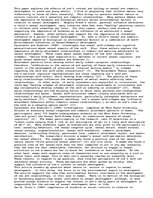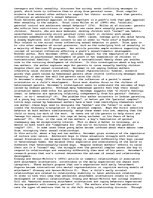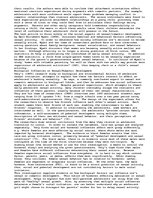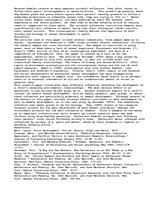-
Sexual and Romantic Development in Youth
Wyatt's (1989) investigation also only studies females, like Cyranowski and Andersen's evaluation. Finally, Udry's (1980) report on the hormonal and social determinants of adolescent sexual development has many disappointing limitations with regards to sample size. His information about blacks is so minimal; there is no hormonal information at all and an unsubstantial amount of social or pubertal data.
This research paper illustrates many different influences determine the development of a child's sexuality and romantic relationships. The most obvious effect on an adolescent is the society he/she grows up in. Several different aspects of a child's context can affect sexual development, such as family dynamics, peer groups, or media; these influences are particularly prominent in female development. Although several of the authors in this paper conclude societal effects contribute to male development as well as female development, as in the case study by Heineman (2004), the dominating influence over males proves to be his biology. Udry (1980) states in his research, hormones account for the main determinant of male sexual initiation, whereas the environment accounts for the main influence on females. Trost's example of the media as an important influence over girls answers my initial question about why some children stray from healthy parenting. Adolescent females struggle over following their parents' rules versus following society's rules. Adolescent males, although also influenced by society (e.g. peers and media), abide by their hormones in regards to becoming sexually active.
…




